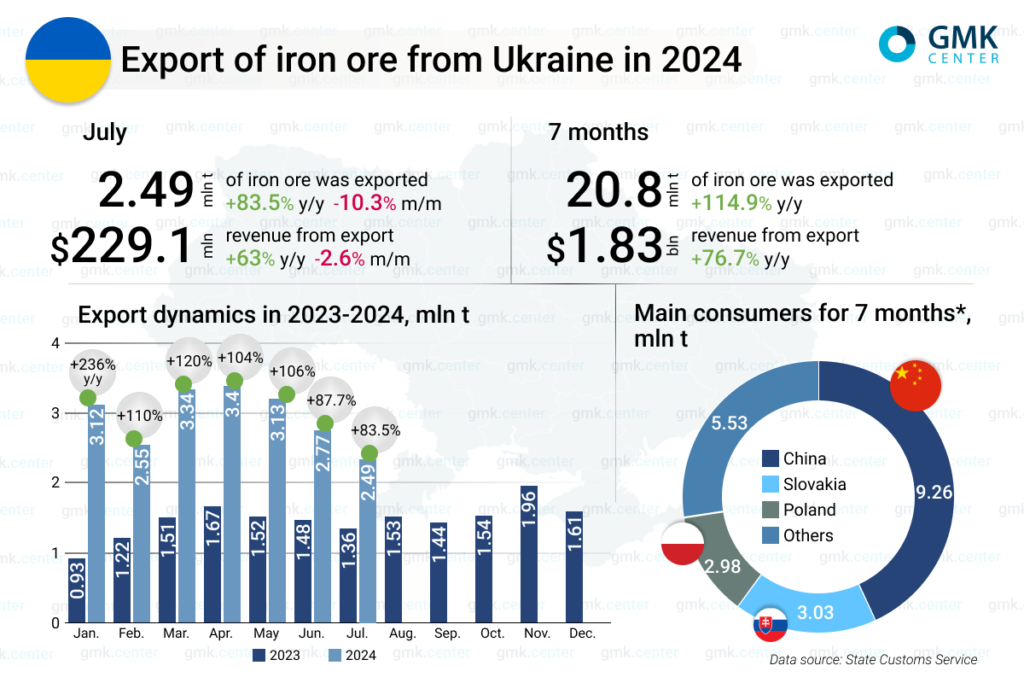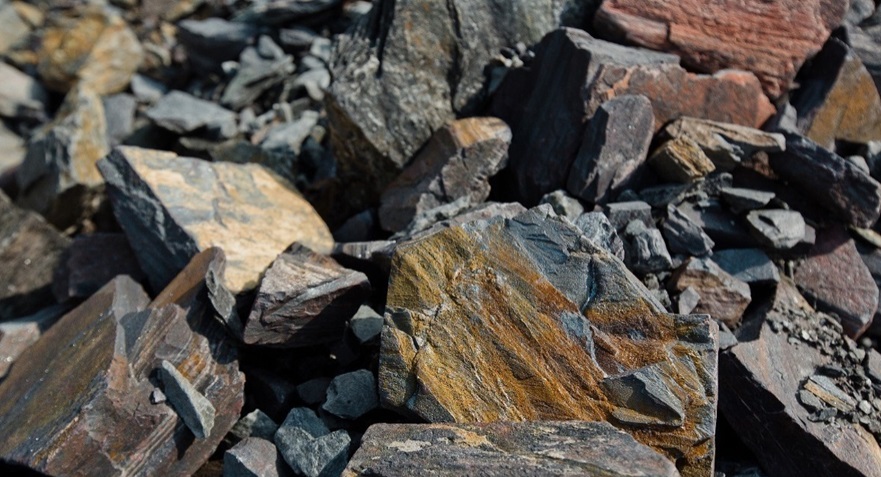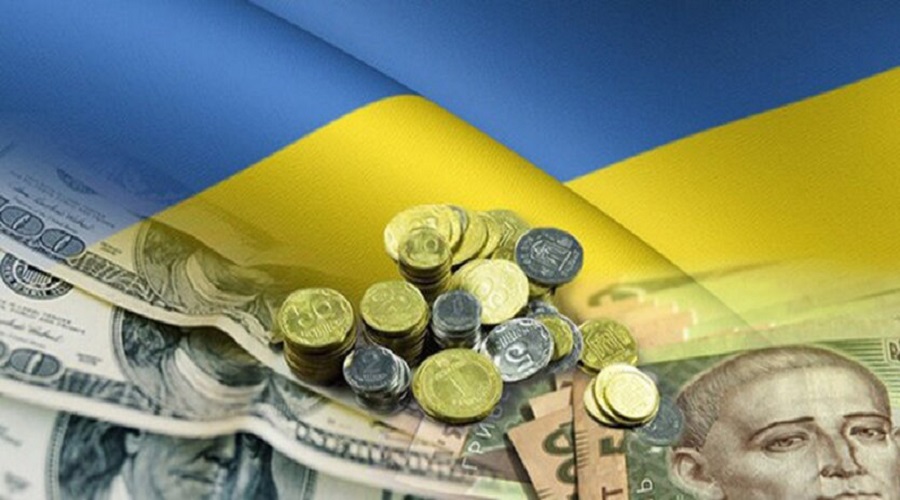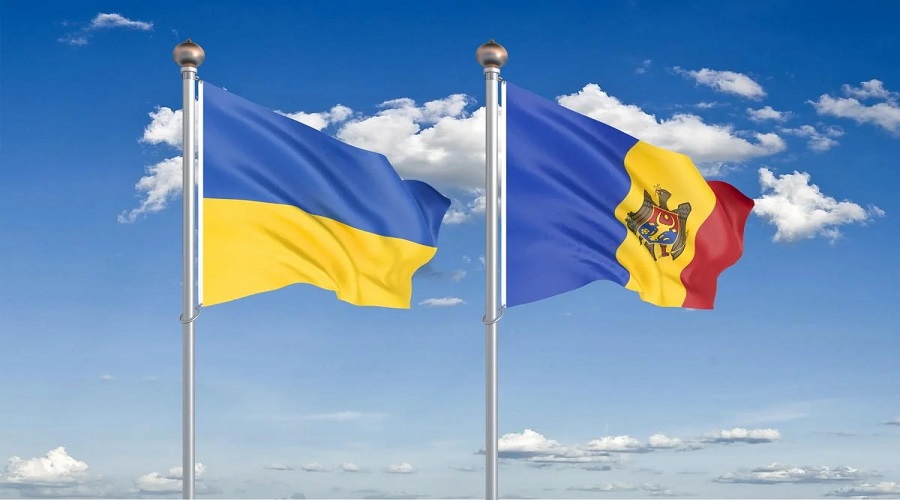The main consumers of raw materials are China, Slovakia and Poland – 9.26 million tons, 3.03 million tons and 2.98 million tons, respectively
In January-July 2024, Ukrainian mining companies increased iron ore exports by 2.1 times compared to the same period in 2023, to 20.8 million tons. This is evidenced by data from the State Customs Service.
In July, shipments of iron ore raw materials abroad amounted to 2.49 million tons, down 10.3% month-on-month and 83.5% more than in July 2023. The July figure is the lowest since December 2023, and the average monthly export volume for 7 months is 3.97 million tons (1.38 million tons a year earlier).
The resumption of iron ore exports in 2024 is facilitated by the opening of a sea export corridor for iron and steel in January. As a result, Ukrainian mining companies have resumed supplies of raw materials to distant markets, in particular to China, which has once again been a leading importer of iron ore from Ukraine since the beginning of the year. In January-July, Chinese consumers imported 9.26 million tons of Ukrainian iron ore, and in June – 830.3 thousand tons (-21.7% m/m). At the same time, European countries remain among the top three importers, in particular, 3.03 million tons of iron ore were shipped to Slovakia in 7 months of 2024, and 386.72 thousand tons in July (-15.2% m/m), Poland – 2.98 million tons and 424.23 thousand tons (-17.3% m/m), respectively.
The slowdown in exports in July is a result of lower demand for raw materials on the global market and lower iron ore prices. At the same time, Ukrainian mining companies are under additional pressure from problems with energy supply, staff shortages due to mobilization, and other factors.

In particular, on June 1, 2024, the Resolution of the CMU No. 661 amended the «Regulations on the peculiarities of the import of electricity in the conditions of the legal regime of martial law in Ukraine», which obliges Ukrainian producers to buy at least 80% of electricity in the EU at the European price, in order to avoid forced restriction of electricity supply. Previously, the mandatory share of imports was 30%.
Such a decision of the government of Ukraine may lead to numerous negative consequences for domestic energy-dependent industrial companies, especially producers of nuclear power plants and steelmakers. Thus, the share of electricity in the production of iron ore concentrate reaches 60%, and pellets – 32%. The increase in electricity costs leads to a sharp increase in the cost price, which makes the continuation of production economically unprofitable. Ingulets Mining, in a letter to the Prime Minister and a number of heads of parliamentary committees, warned that the purchase of imported electricity in the amount of 80% of its own consumption could lead to a complete shutdown of the plant.
According to GMK Center estimates, the decrease in the export of ZRS in the second half of the year may amount to 15% or 2.7 million tons, which means a loss of $250 million in export revenue.
Revenue from the export of iron ore for January-July 2024 amounted to $1.83 billion (+76.7% y/y), and in July – $229.06 million (-2.6% m/m; + 63% y/y).
As GMK Center reported earlier, in 2023, Ukraine reduced the export of iron ore by 26% compared to 2022 – to 17.75 million tons. Compared to the pre-war year 2021, the export of raw materials decreased by 60%. The revenue of Ukrainian MMC companies from the export of iron ore decreased by 39.4% y/y – up to $1.77 billion.
The main producers of iron ore raw materials in Ukraine are Ingulets Mining, Kryvyi Rih Mining, Poltava Mining, Yeristivsky Mining, Northern Mining, Central Mining, Southern Mining, ArcelorMittal Kryvyi Rih, Sukha Balka, Rudomaine.
Source: https://gmk.center



